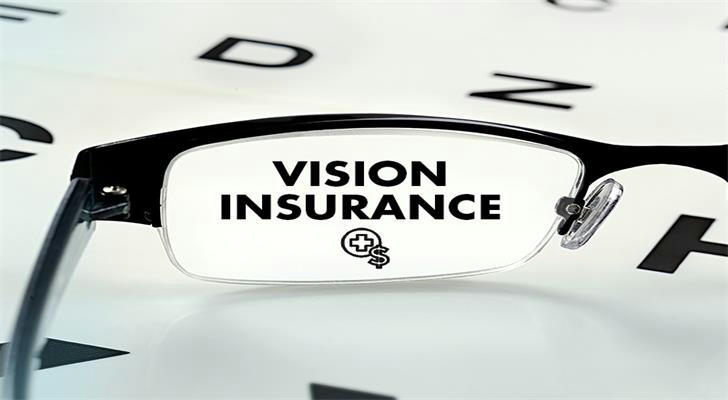Vision Insurance for Seniors: A Comprehensive Guide

Vision health is a crucial aspect of overall well-being, especially as we age. As seniors, our eyes undergo natural changes that can impact our vision. To maintain optimal eye health and ensure clear vision, it's essential to have adequate vision insurance coverage. In this comprehensive guide, we'll delve into the world of vision insurance for seniors, covering everything from basic concepts to tips for saving money and maintaining good eye health.
Understanding Vision Insurance Basics
What is Vision Insurance?
Vision insurance is a type of health insurance that helps cover the cost of eye exams, eyeglasses, contact lenses, and sometimes even eye surgery. It works similarly to other types of insurance, with premiums, deductibles, co-pays, and out-of-pocket costs.
How Does Vision Insurance Work?
When you enroll in a vision insurance plan, you'll typically pay a monthly premium. In exchange, you'll receive coverage for specific eye care services. For example, your plan might cover a certain percentage of the cost of an annual eye exam, eyeglasses, or contact lenses.
What Does Vision Insurance Cover?
Every vision insurance provider will offer different levels of coverage amid their range of policies and add-on options. However, the primary services and enhancement options are typically the same across the board. Traditionally, one can expect a good vision insurance policy to offer the following benefits.
• Eye examinations: Policyholders will qualify for one annual vision exam, with copays ranging between $0 and $20.
• Eyeglass frames: Often offered in the form of an “allowance,” meaning the amount of money the insurer pays, eyeglass frame discounts range between $150 and $230, depending on the provider.
• Lenses for eyewear: Typically, out-of-pocket costs for standard lenses are a copay ranging between $20 and $60. Benefits are usually available once a year or once every two years.
• Contact lenses: Payouts for contacts average between $100 and $150, depending on the level of coverage you select and policy limitations.
• LASIK and surgical procedures: Many providers will offer some type of discount or coverage for vision correction surgeries. The amounts will vary, but they average around a $500 max payout.
• Bundled care: Though not directly covered by vision insurance, many vision insurance carriers offer bundled dental or hearing care with vision policies, which can help older adults pay for things like routine dental cleanings or hearing aids.

Common Eye Conditions Affecting Seniors
As we age, our risk of developing certain eye conditions increases. Some of the most common eye conditions affecting seniors include:
• Cataracts: Clouding of the lens in the eye, which can impair vision.
• Glaucoma: A group of eye diseases that damage the optic nerve, leading to vision loss.
• Macular degeneration: A condition that affects the central portion of the retina, causing blurred vision.
• Diabetic retinopathy: Damage to the blood vessels in the retina caused by diabetes.
Choosing the Right Vision Insurance Plan
When selecting a vision insurance plan, several key factors should be considered to ensure you choose a plan that aligns with your specific needs and budget.
Key Factors to Consider
1.Coverage for Eye Exams:
• Annual Eye Exams: Ensure the plan covers routine eye exams, which are essential for detecting and addressing potential eye problems early on.
• Frequency of Coverage: Some plans may limit the number of covered eye exams per year.
2.Coverage for Eyeglasses and Contact Lenses:
• Frame and Lens Coverage: Check the coverage limits for frames and lenses, as these can vary significantly between plans.
• Contact Lens Coverage: If you wear contact lenses, verify if the plan covers them and, if so, to what extent.
3.Coverage for Eye Surgery:
• Cataract Surgery: If you anticipate needing cataract surgery, ensure the plan covers it.
• LASIK and Other Refractive Surgeries: While some plans may cover these procedures, it's important to check the specific terms and conditions.
4.Network of Providers:
• Preferred Provider Organizations (PPOs): These plans offer more flexibility in choosing eye care providers, but you may pay higher costs if you see a provider outside the network.
• Health Maintenance Organizations (HMOs): These plans typically have a narrower network of providers, but you may pay lower costs if you stay within the network.
5.Cost:
• Premiums: Consider the monthly premium cost.
• Deductibles: The amount you pay out-of-pocket before insurance coverage begins.
• Co-pays: Fixed amounts you pay for specific services, such as eye exams or prescriptions.
• Out-of-Pocket Maximum: The maximum amount you'll pay out-of-pocket in a given year.

Saving Money on Vision Insurance
While vision insurance can be a valuable tool for managing eye care costs, there are several strategies to help you save money on premiums and out-of-pocket expenses:
1.Shop Around and Compare Plans:
• Online Comparison Tools: Utilize online comparison tools to easily compare plans from different insurers.
• Employer-Sponsored Plans: If your employer offers vision insurance, consider enrolling in their plan to potentially lower costs.
• Medicare Advantage Plans: If you're eligible for Medicare, consider a Medicare Advantage plan that includes vision coverage.
• Discount Vision Plans: These plans offer discounted rates on eye exams, eyeglasses, and contact lenses.
2.Maximize Your Flexible Spending Account (FSA) or Health Savings Account (HSA):
• Pre-Tax Savings: Use pre-tax dollars from your FSA or HSA to pay for qualified eye care expenses, such as eyeglasses, contact lenses, and eye exams.
3.Negotiate with Your Eye Care Provider:
• Out-of-Network Providers: If you see an out-of-network provider, negotiate a discounted fee.
• Generic vs. Brand-Name: Opt for generic contact lens solutions or prescription eye drops to save money.
4.Take Advantage of Discounts and Promotions:
• Online Retailers: Purchase eyeglasses and contact lenses online to take advantage of discounts and promotions.
• Retailer Discounts: Check with retailers like Costco or Sam's Club for discounted eye exams and eyewear.
5.Consider a Vision Reimbursement Plan:
• Flexible Spending: These plans allow you to set aside pre-tax dollars to reimburse yourself for qualified eye care expenses.
Maintaining Good Vision Health
In addition to having adequate vision insurance, it's essential to take proactive steps to maintain good eye health:
• Regular Eye Exams: Schedule regular eye exams to detect and address potential eye problems early on.
• Healthy Lifestyle Habits: Adopt a healthy lifestyle, including a balanced diet, regular exercise, and adequate sleep.
• Protecting Your Eyes from Harmful UV Rays: Wear sunglasses with UV protection to shield your eyes from harmful sun rays.
• Early Detection and Treatment of Eye Conditions: If you experience any changes in your vision, consult your eye doctor promptly.
Conclusion
By understanding the basics of vision insurance, choosing the right plan, and adopting healthy lifestyle habits, seniors can protect their vision and enjoy a clear and vibrant life. Prioritize your eye health and make vision insurance a part of your overall health care strategy.
